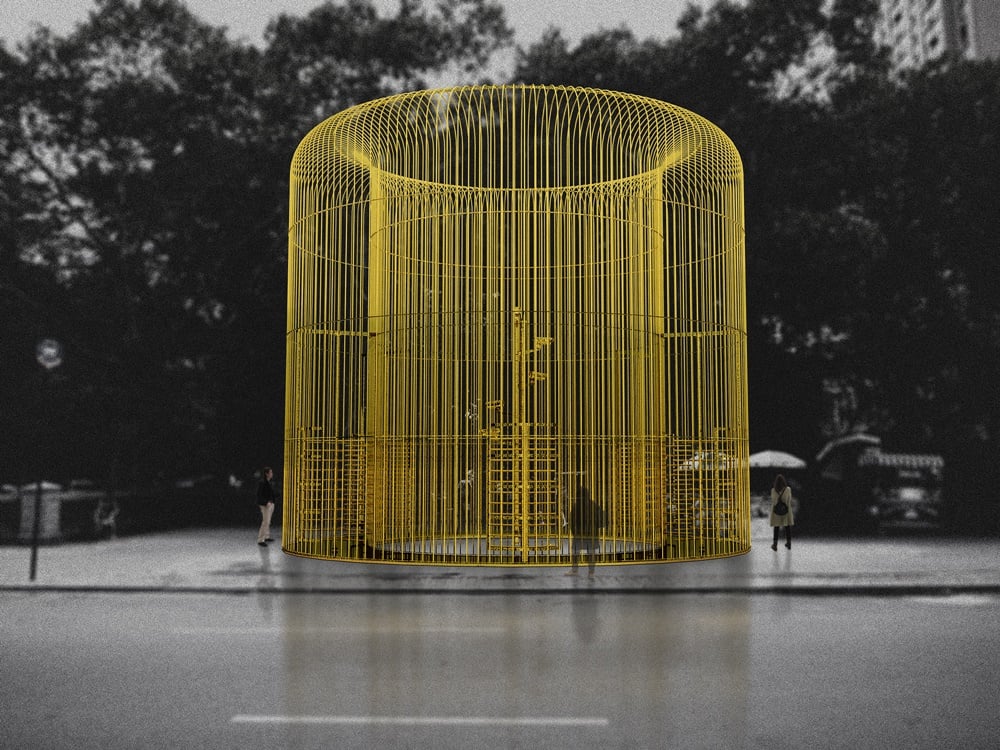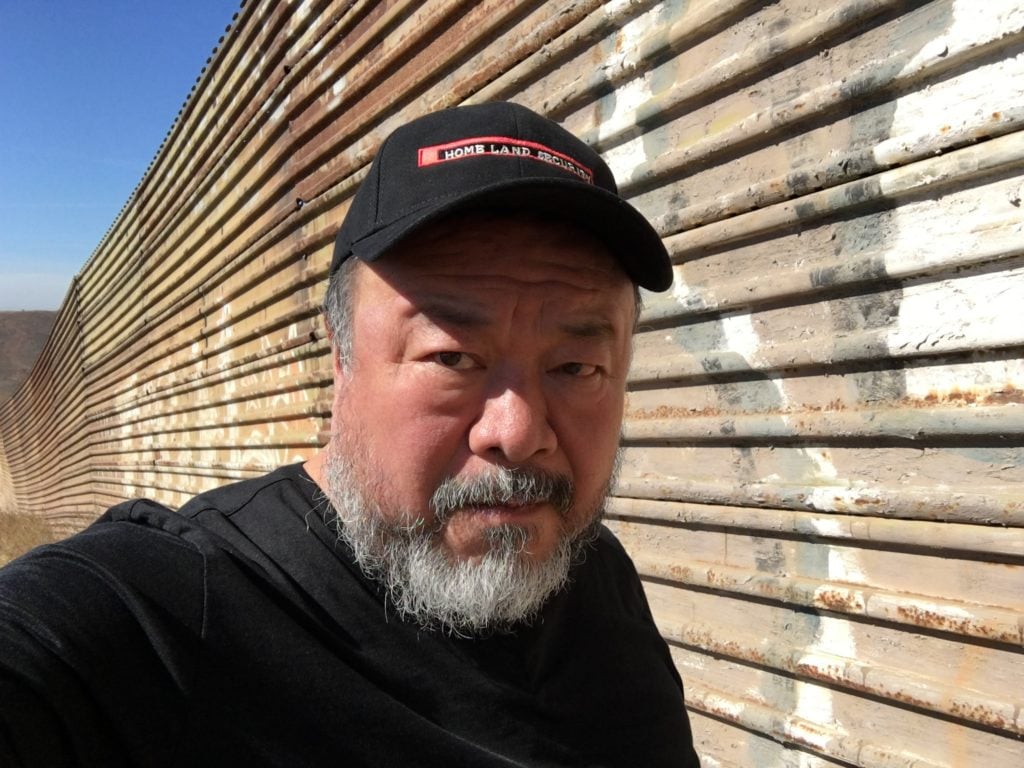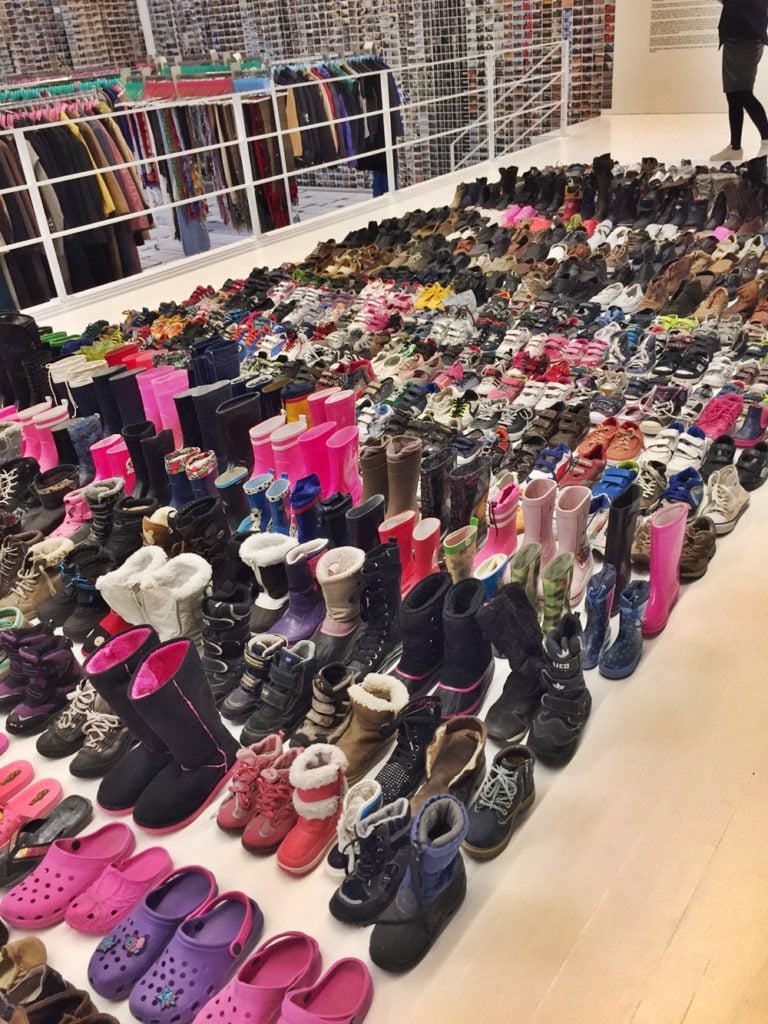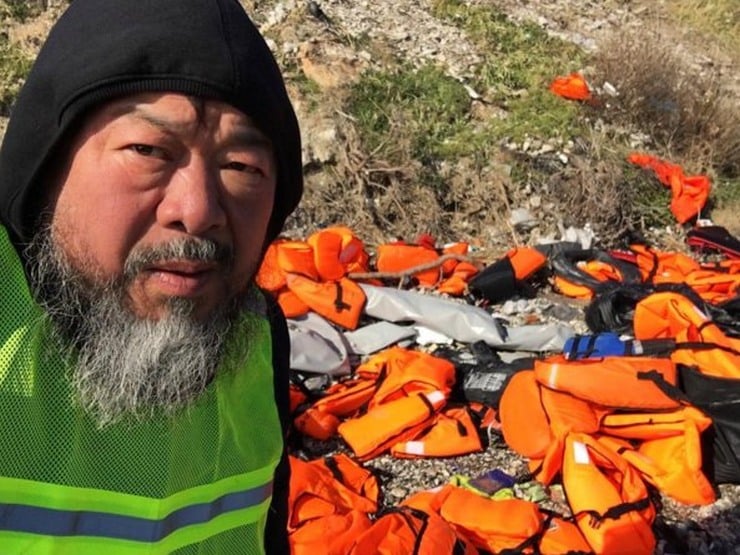Art & Exhibitions
Ai Weiwei to Take Over New York City With Massive Public Art Project
Mayor de Blasio and First Lady McCray are enthusiastic proponents.

Mayor de Blasio and First Lady McCray are enthusiastic proponents.

Eileen Kinsella

Ai Weiwei is getting ready to take Manhattan—again.
Following a momentous season in New York City this past fall—in which the Chinese dissident artist had no fewer than four simultaneous gallery shows— he is now planning to mount his most ambitious public art project to date. This fall, he will introduce “Good Fences Make Good Neighbors,” a multi-site, multi-borough installation that explores the inclination towards, and effects of, erecting boundaries in society.
The exhibition is the latest initiative announced by the Public Art Fund, the longtime organizer of dynamic contemporary art installations in New York, celebrating its 40th anniversary year.

Ai Weiwei at the U S/Mexico border, Tijuana, 2016. Image courtesy of Ai Weiwei Studio.
The project will involve various metal wire security fence installations at carefully chosen locations, including the Essex Street Market on Manhattan’s Lower East Side, the Cooper Union for the Advancement of Science and Art on Astor Place, JCDeaux bus shelters in Brooklyn, the Doris C. Freedman Plaza at Central Park, and Flushing Meadows Park in Queens. It will be on view from October 12, 2017 through Feburary 11, 2018.
Ai will transform “an ordinary architectural element into a series of striking installations,” said Public Art Fund director and chief curator Nicholas Baume, adding that the artist follows “in the radical tradition of artists who began to use the fabric of the city itself as a creative platform in the 70s.”
Taking its inspiration from Robert Frost’s classic poem “The Mending Wall,” Ai aims to address current sociopolitical battles and clashes over immigration and is drawing attention to “the role of the fence as both a physical manifestation and metaphorical expression of division,” according to a statement from the Public Art Fund.

Ai Weiwei, “Laundromat” at Deitch Projects. Courtesy Eileen Kinsella.
Ai recovered his passport in 2015, four years after it was confiscated by Chinese authorities, some of which time was spent under house arrest in China. Since regaining his ability to leave the country Ai has traveled extensively, particularly to refugee areas, including crude, makeshift camps. In his recent exhibitions he has carefully and thoughtfully documented the plight of those displaced by war and oppression by, for instance, collecting and laundering clothing, shoes, and other personal items left behind by those forced to move on.
Ai’s ongoing practice and this project in particular continues the challenge previously taken up by other international artists who have cast a critical eye on the controversial history of the US and its immigration policies and practices—think Joseph Beuys’ seminal 1974 performance “I Like America and America Likes Me,” and Tehching Hsieh, who will represent Taiwan at the upcoming Venice Biennale,
In a statement, the artist said: “I was an immigrant in New York in the 1980s for ten years and the issue with the migration focus has been a longtime focus of my practice. The fence has always been a tool in the vocabulary of political landscaping and evokes associations with words like ‘border,’ ‘security,’ and ‘neighbor,’ which are connected to the current global political environment. But what’s important to remember is that while barriers have been used to divide us, as humans we are all the same.”

Ai Weiwei.
Photo: Ai Weiwei via Instagram.
Mayor Bill de Blasio expressed enthusiasm for the project, stating that the exhibit “serves as a reminder to all New Yorkers that although barriers may attempt to divide us, we must unite to make a meaningful impact in the larger community. New York City has long served as a gateway to the United States for millions of immigrants seeking better lives and has long benefited from their contributions and service in every neighborhood across the five boroughs.” He described the show as “expansive” noting that it “explores themes of freedom and the power of self-expression [and] is a perfect symbol and reminder for all of us, especially in the current political climate.”
First Lady Chirlane McCray weighed in as well, saying “Ai Weiwei pours his heart and soul into art that asks big questions and is not constrained by artistic and social traditions… He challenges us to think about the function and rationale for a common barrier… The exhibition compels us to question the rhetoric and policies that seek to divide us.”
As Baume noted, the exhibtion will invite the public to consider the role of the fence in modern society as well as our own relationship to the object in question. He says it will pose questions including: “Does this fence serve a purpose? Does it feel imposed or like it belongs? What does it separate me from? What side of the fence am I on? Does it protect me, or do I feel constrained?”